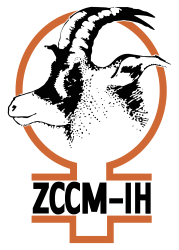Lubambe continued with restructuring through downsizing of output and the reduction of related labour cost. The largest contributors to the unit cost savings were a reduction in labour cost due to a 66.00% reduction in expatriate labour, a reduction in stoping dilution obtained through an improvement in the mining stoping method, and a 4.00% increase in plant recoveries obtained through plant optimisation initiatives.
This is the first reporting period in which Lubambe operated in accordance with the reduced production target of 80,000 tonnes of ore per month. The reduced target was implemented in March 2016 to curtail operating losses, save cash and preserve the ore body whilst implementing a strategy to upgrade the underground dewatering infrastructure.
During the period under review a labour restructuring programme was successfully concluded which aligned the total labour complement with the revised lower production rate of 80,000 tonnes per month. Ongoing capital expenditure was curtailed to preserve cash with the majority of expenditure being incurred for mine ramp development.
The Lubambe Extension Project was put on hold until an opportune time when conditions are suitable for additional investment. This high-grade area remains an integral part of the future development of the Lubambe ore body.
Lubambe Copper Mine Limited (Lubambe) reported revenues of K517.37 million (US$54.18 million) for the year ended 31st March 2018 [(2017: K824.92 million (US$ 83.65 million)]. Operating costs were above budget at K1,021.84 million US$107.01 million compared to the K973.62 million (US$101.96 million) target due to increased engineering activity as production was being increased. The loss for the year was K350.4 million (US$36.70 million). Lubambe’s financial year was changed to now run from 1st January to 31st December.
For the 9 months to 31st March 2018 Lubambe’s mined volumes were 840, 376 tons of copper ore, above the target of 808,122 tons as activity was being ramped up. Total contained copper produced over the same period was 14,891 tons, above the target of 14,566 tons.
The historical losses had been caused by the initial challenges Lubambe had faced during the project’s development phase which included flooding, dilution during the mining process due a thin ore body thereby increasing running costs. Dilution was further exacerbated by the wide inter-level vertical spacing which was upwards of 17 meters ramp spacing.
During the year under review, EMR Capital of Australia completed the purchase of the ARM and VALE stakes in Konnoco, thereby gaining an 80% ownership of Lubambe. After the acquisition, EMR Capital put in place various interventions at the mining and ore treatment processes to improve production.
Production had initially been capped at 80,000 tonnes of ore to contain costs but in EMR’s business model this level is deemed to be unsustainable. EMR have ramped up and are targeting to reach the 200,000 tonnes of ore production level by 2019.
There were no dividends declared during the year under review (2016: Nil).

